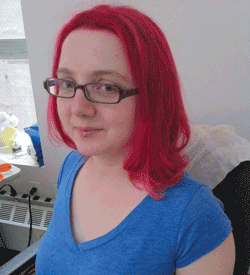Defining the new breed of EE — an interview with Limor Fried

I recently had a chance to chat with Limor Fried. If you don’t know who she is, you should definitely google her name. She’s one of the pioneers in the open-source hardware scene.
Bryan DeLuca: What made you get into electronic engineering?
Limor Fried: When I was about 7 or 8 I saw a bunch of balloons stuck to the ceiling at a local mall. No one could reach them so I went home and constructed a mechanical arm. After going back and retrieving all the balloons. It was then I realized engineering was for me.
Bryan DeLuca: Seeing that the largest demographic is males 48+ in electronic Engineering, what challenges are there for the younger age group? What challenges are there for women?
Limor Fried: There are guy engineers? All the best engineers I know are women and under 40 – but these are my friends and peers, so I’m biased. Kidding aside, I do know a few good male engineers. 🙂 The biggest challenge for any group is to see others like them doing engineering. We need to celebrate engineers and expose kids at earlier ages to how much fun engineering is. The more kids see themselves doing engineering, the more likely we’ll see them choose this creative field.
Bryan DeLuca: What advice do you have for young engineers?
Limor Fried: Publish, publish, publish. Any time you make something, document it and publish online. It can be on Instructables, MAKE, our forums, Flickr, a blog, wherever, but publish fast and publish often. When we look to hire people or work with them, we usually look for what they’ve shared online. Since we do open-source hardware, good documentation and willingness to share is extremely important to us.
Bryan DeLuca: What was your favorite project?
Limor Fried: The Wave Bubble (open-source cell/gps/Wi-Fi jammer) is one of my favorite projects – not because of what it does or the design, but the questions it raises about our relationship with technology. Everyone “wants” a device that turns off cell phones, but why? How did they become so annoying? The social and legal questions about public spaces are interesting to see discussed.
Bryan DeLuca: What is your most creative hack?
Limor Fried: I think when you can release something or cause others to be creative, that’s the best hack of all. Late last year we created a bounty for open-source drivers for the Microsoft Kinect. We reverse-engineered the USB protocols it used and released them on GitHub. Within a day someone made and released open-source drivers and now there are thousands of “hacks” from art to medical use – all because we helped unleash the creative potential of some hardware.
Bryan DeLuca: What is the one tool you couldn’t do without?
Limor Fried: Diagonal cutters, cannot live without! A good pair pretty much does everything for you!
Bryan DeLuca: What is your dream project?
Limor Fried: Open-source hardware watch. Working on it 🙂
Bryan DeLuca: What new things do you have going on at ADAfruit?
Limor Fried: We’re currently expanding, hiring more people (we just hired a full-time engineer), and we will be releasing a few new projects shortly. We’re excited about the open-source solar charger that’s almost ready to ship! It’s summertime and a great way to learn electronics while you charge your gadgets in the sun.
Bryan DeLuca: What does the future hold for LadyAda?
Limor Fried: I’m not sure what the future holds, but I plan to make things, release them as open-source hardware, work with great people who share the same desire to make the world a better place through engineering.
Limor Fried received her masters in electrical engineering and computer science at the Massachusetts Institute of Technology. She is the founder of Adafruit Industries, as well as the engineer behind the electronic kits sold by the company. In 2009, she was awarded the Pioneer Award by the Electronic Frontier Foundation for her participation in the open source hardware and software community. In 2011, Fried was awarded the Most Influential Women in Technology award by Fast Company and appeared on the cover of the April 2011 WIRED Magazine. Also see “Background: The first Lady Ada, the first computer programmer” http://bit.ly/jew1yg. ■
BY BRYAN DELUCA
Advertisement
Learn more about Electronic Products Magazine





